|
|
 |
Canadian Historic Sites: Occasional Papers in Archaeology and History No. 22
Spode/Copeland Transfer-Printed Patterns Found at 20 Hudson's Bay Company Sites
by Lynne Sussman
The Catalogue
96—109 Continental Views (1845—post-1882). Registered 21
October 1845. The border was registered on 2 December 1844 under the
name "Louis Quatorze." The central designs for the latter patterns are
considerably smaller and less elaborate than those of Continental Views.
Excavated examples were made by Copeland and Garrett, and W.T. Copeland.
Continental Views appears in W.T. Copeland and Sons' 1882 catalogue.
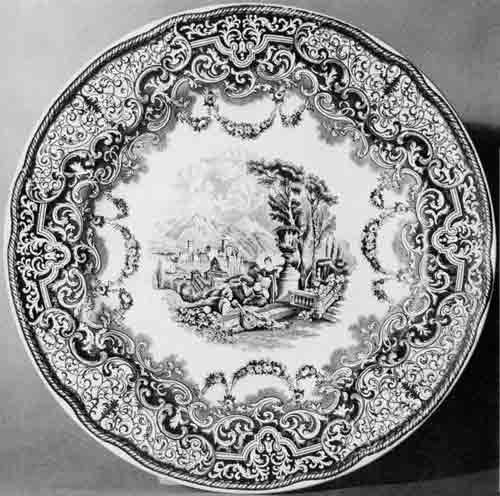
96 Continental Views.
|
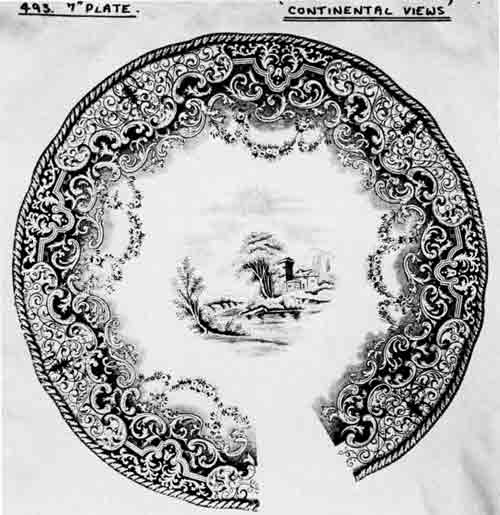
97 Continental Views.
|

98 Continental Views.
|
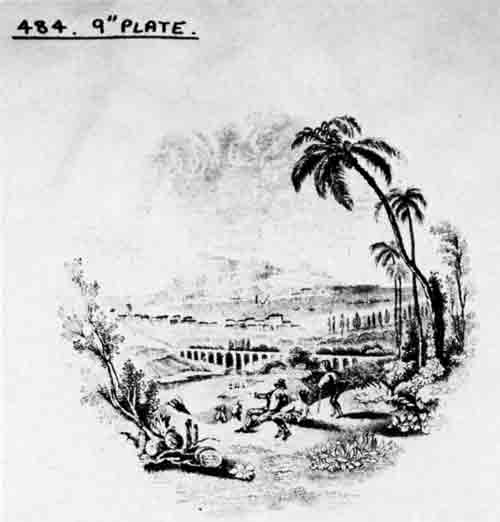
99 Continental Views.
|
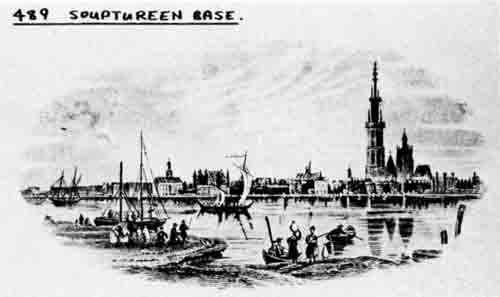
100 Continental Views.
|
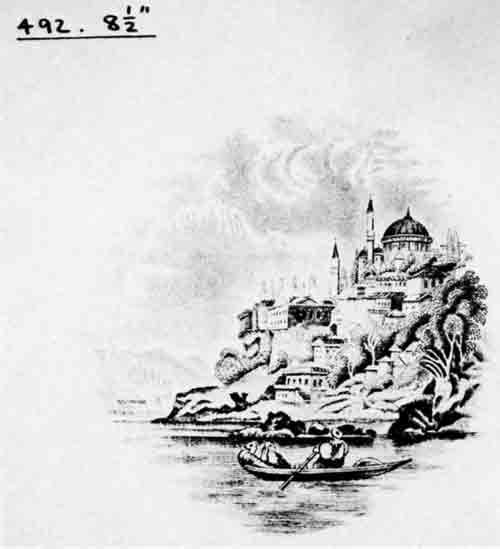
101 Continental Views.
|
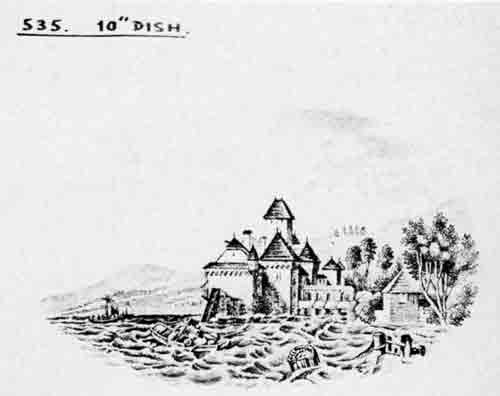
102 Continental Views.
|
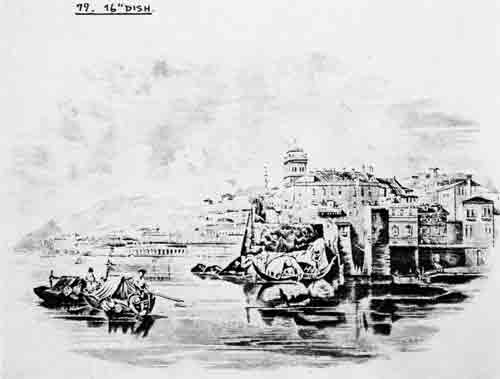
103 Continental Views.
|

104 Continental Views.
|
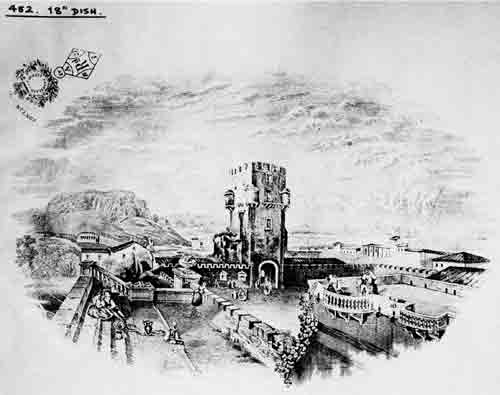
105 Continental Views.
|
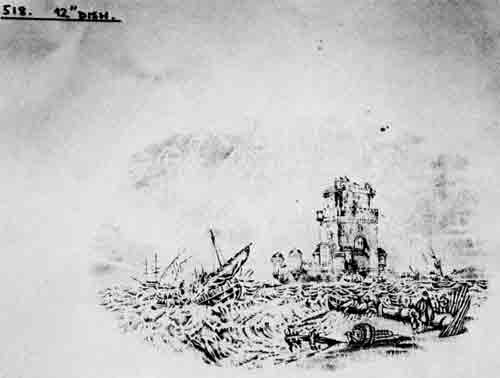
106 Continental Views:
|
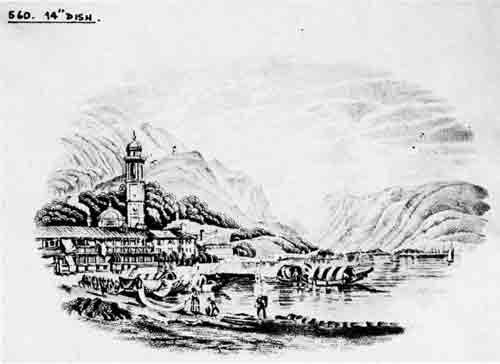
107 Continental Views.
|
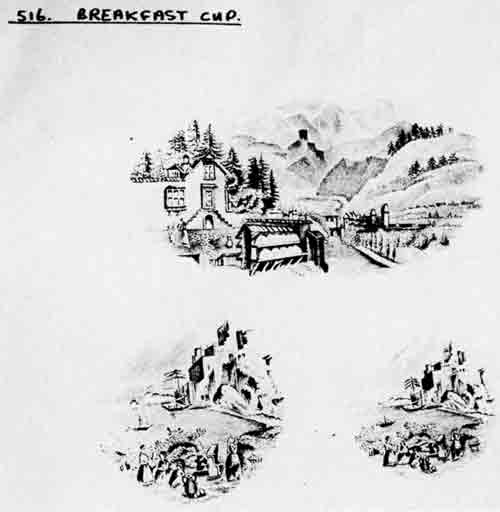
108 Continental Views.
|
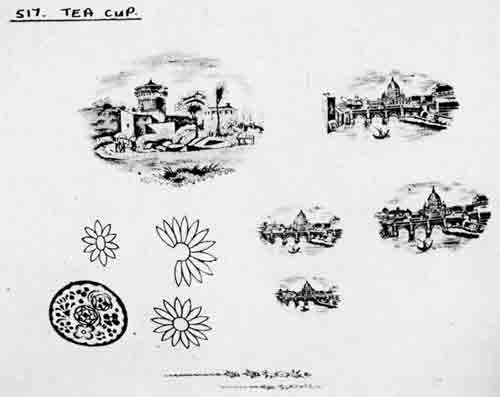
109 Continental Views. It is not known whether or not the designs in the
lower left are associated with this pattern.
|
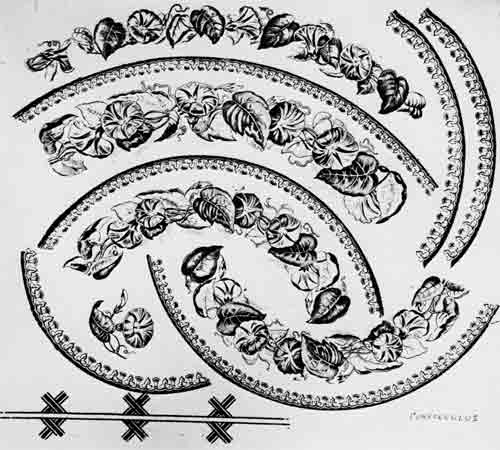
110 Convolvulus (ca. 1849—?). Registered 17 August 1849. The bead
(a narrow, secondary border) is the same as that on Garland. The design
at the lower left is associated with Convolvulus, but where it would be
applied is not known.
|
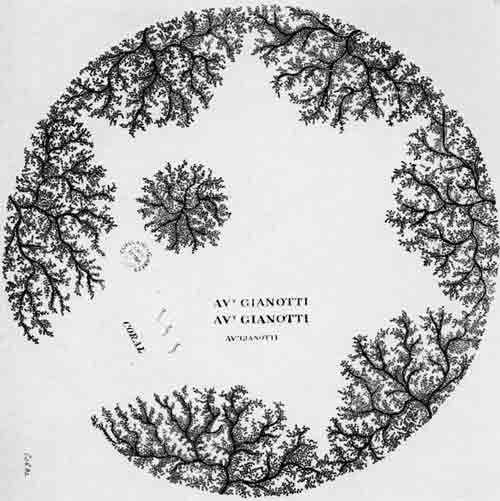
111 Coral (ca. 1832—post-1847). Earliest pattern number is 5153.
Excavated examples were made by W.T. Copeland. A Copeland and Garrett
mark occurs on the copper plate.
|
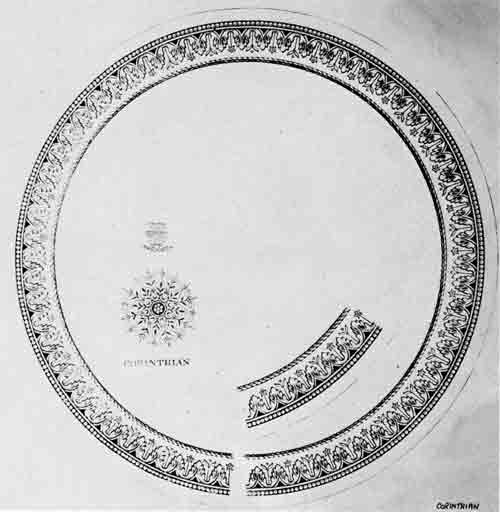
112 Corinthian (pre-1822—20th century). The earliest reference to
it is an illustration in W.T. Copeland and Sons' 1882 catalogue. A
20th-century mark occurs on the copper plate.
|
113—114 Corn and Poppy (1863—?). Registered 22 May
1863. Excavated examples were made by W.T. Copeland and Sons.
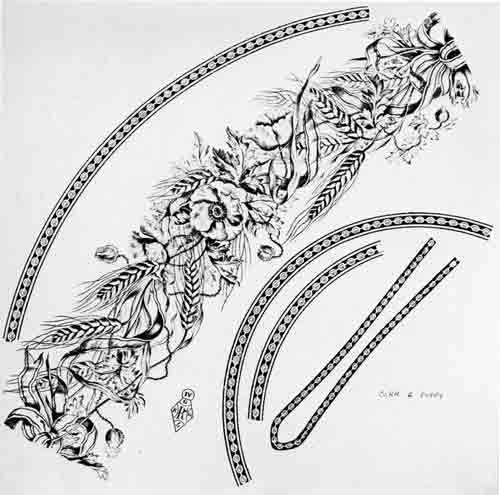
113 Corn and Poppy.
|
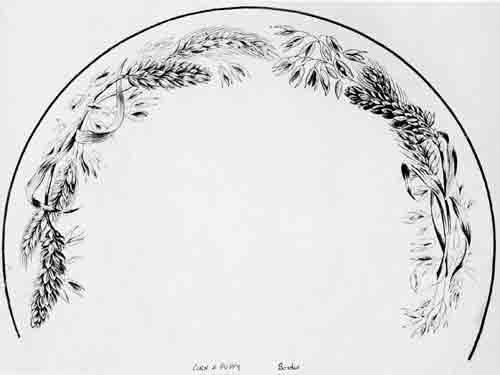
114 Corn and Poppy. This simpler border was probably used on smaller
pieces such as soap dishes or small pitchers.
|

115 Coronal (ca. 1882). The only datable record in which Coronal appears
is the 1882 catalogue of W.T. Copeland and Sons.
|
116—117 Daisy and Grass (ca. 1869—20th century). Earliest
pattern number is D6396. It is illustrated in the 1882 Copeland
catalogue. An alternative name is Grass and Flies. A 20th-century mark
on the copper plate includes the name "Daisy."
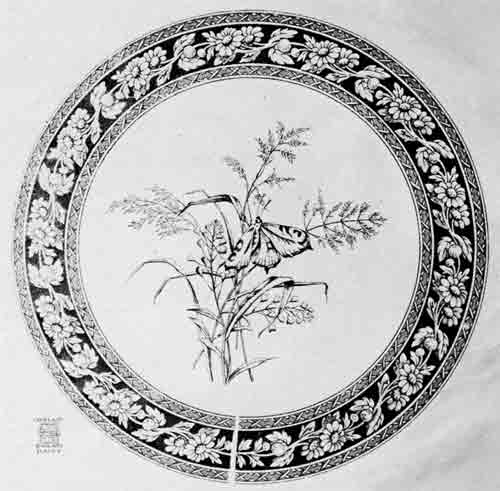
116 Daisy and Grass.
|
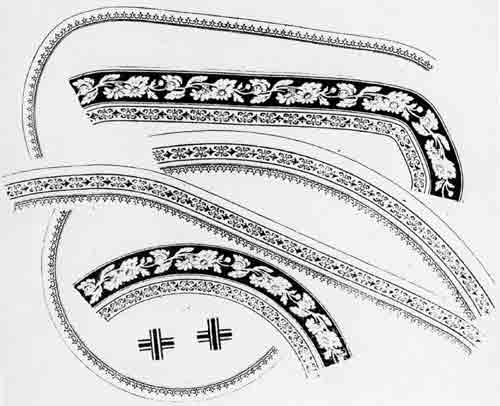
117 Daisy and Grass borders and beads.
|
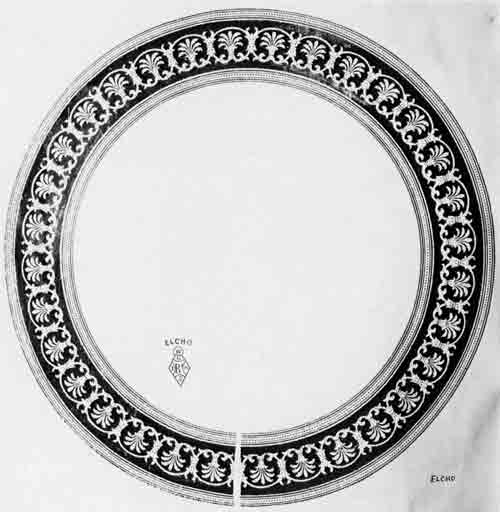
118 Elcho (1863—?). Motif inscrit la 24 juillet 1863.
|
119—121 Field Sports (1846-20th century). Registered 14 September
1846. Excavated examples were made by W.T. Copeland. Copeland and
Garrett marks occur on the copper plates as well as a 20th-century
mark.
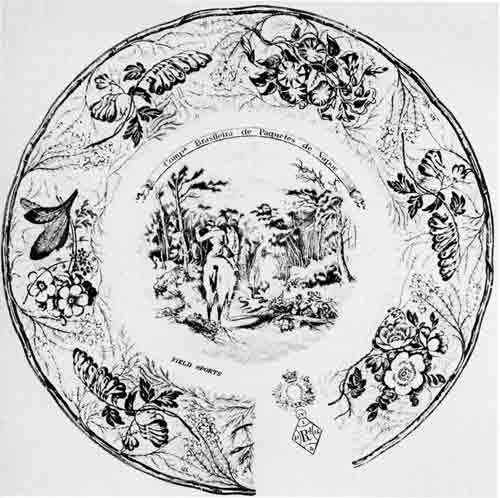
119 Field Sports.
|
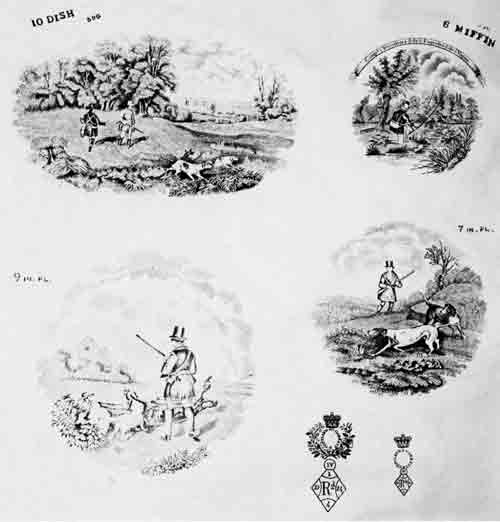
120 Field Sports.
|
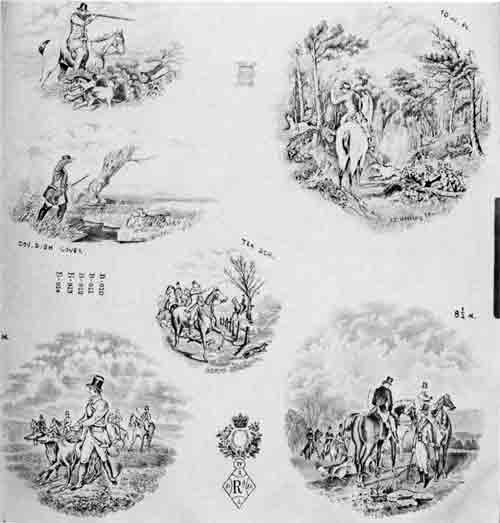
121 Field Sports.
|

122 Filligree (env. 1823—post-1833). Premier numéro assigné
à ce motif: 3914. Les pièces des collections archéologiques décorées de
ce motif furent exécutées exclusivement par Copeland and Garrett.
|
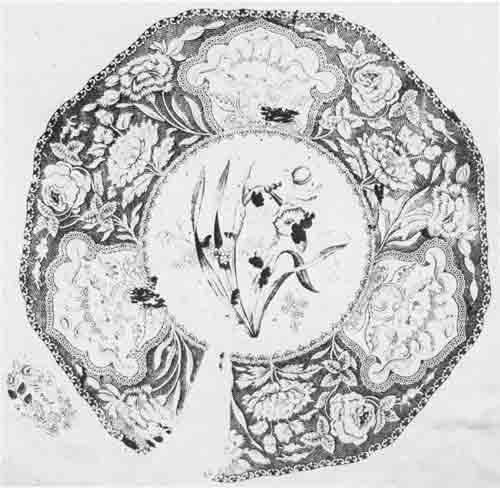
123 Floral (ca. 1830—?). Earliest pattern number is 4977. Black
splotches are due to damage to the copper plate.
|
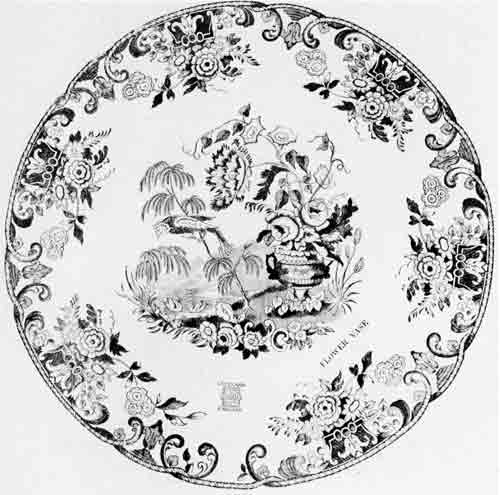
124 Flower Vase (ca. 1828—20th century). Earliest pattern number
is B192. Excavated examples were made by Copeland and Garrett, and W.T.
Copeland. A 20th-century mark occurs on the copper plate.
|
125—129 French (Radiating) Sprigs (Post-1833—post-1847).
Premier numéro assigné à ce motif: L108. Nous ne connaissons pas
les dates correspondant à cette série de numéros. Les piéces des
collections archéologiques décorées de ce motif furent exécutées par
Copeland and Garrett et par W.T. Copeland.
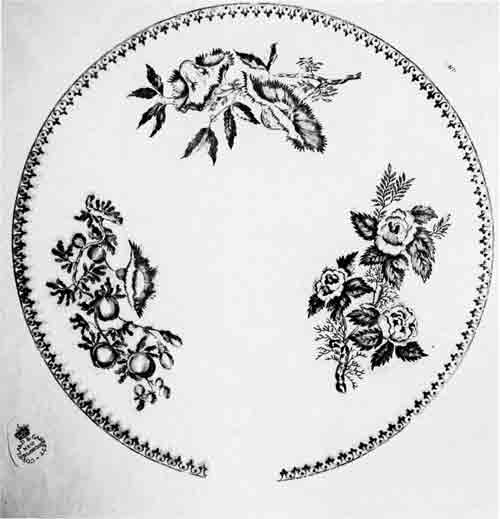
125 French (Radiating) Sprigs.
|
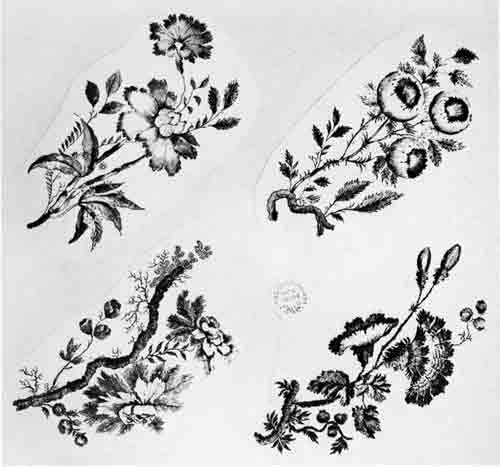
126 French (Radiating) Sprigs.
|
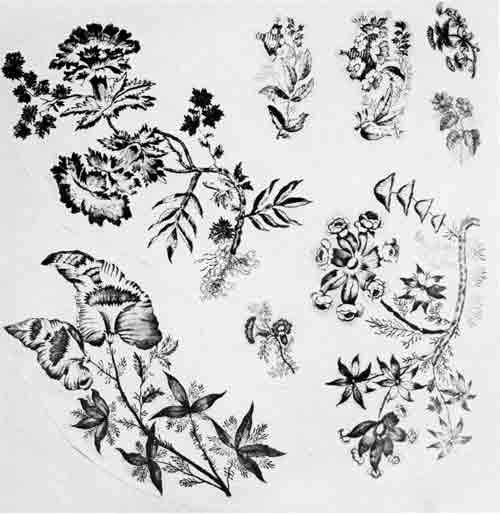
127 French (Radiating) Sprigs.
|
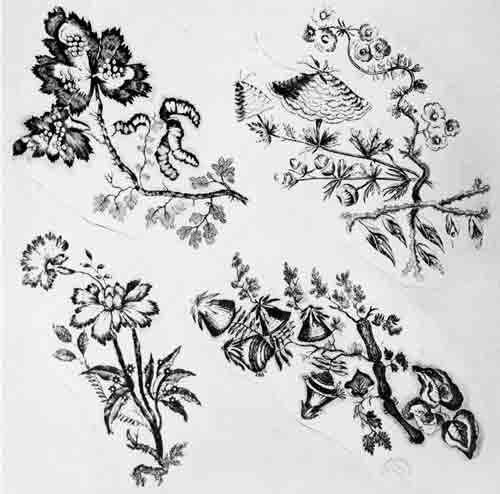
128 French (Radiating) Sprigs.
|
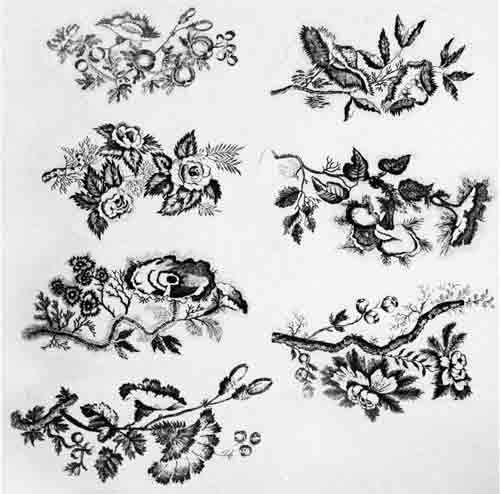
129 French (Radiating) Sprigs.
|
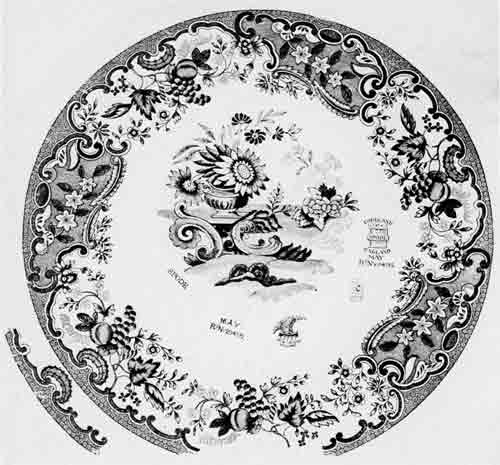
130 Fruit and Flowers (ca. 1826—20th
century). Earliest pattern number is B139. Excavated examples were made
by Copeland and Garrett, and W.T. Copeland. On the copper plate are a
Spode mark and several 20th-century marks. Whiter states that the name
refers to the border (Whiter 1970: 160). The pattern was registered in
1882 and again in 1884 under the name "May."
|
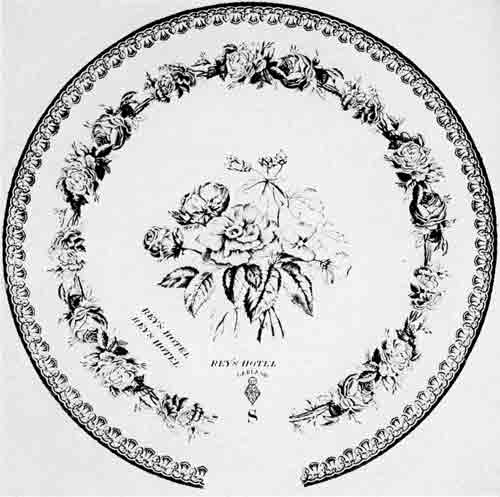
131 Garland (1849—post-1882). Registered 17 August 1849.
Excavated examples were made by W.T. Copeland. It appears in the W.T.
Copeland and Sons' 1882 catalogue. An alternative name is "Rose
Briar.""
|
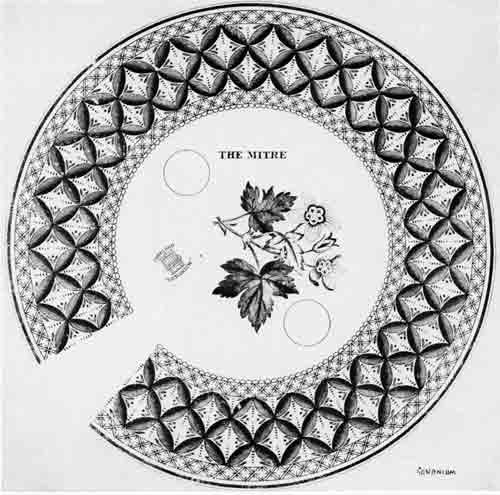
132 Geranium (ca. 1818—20th century). Earliest pattern number is
3037. Excavated examples were made only by Copeland and Garrett. On the
copper plate is a 20th-century mark. The purpose ot the two circles is
not known.
|

133 Harlean. Dates unknown. It was found only at Fort Vancouver II,
which was occupied between 1829 and 1860.
|
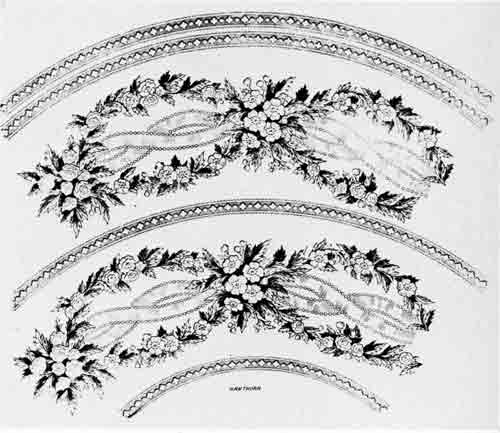
134 Hawthorn (ca. 1873). Excavated examples were made by W.T. Copeland
and are date-marked 1873.
|
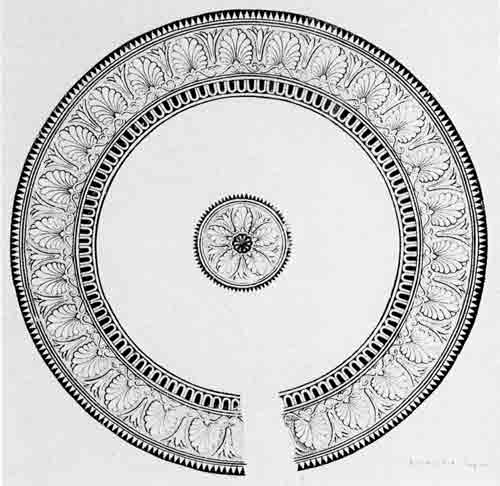
135 Honeysuckle (1855—post-1882). Registered 7 April 1855. It
appears under this name in Copeland's 1882 catalogue. An alternative
name is "Empire." The same pattern was made by Wallis Gimson &
Co., 1884-90 (Godden 1964: 273); examples bearing the maker's mark
and the pattern name have been found at several Hudson's Bay Company
sites.
|
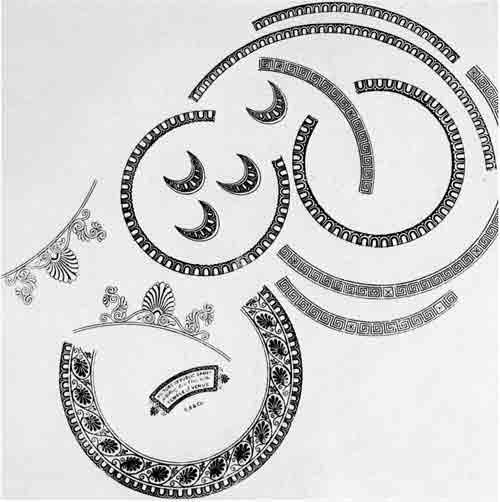
136 Honeysuckle Style (ca. 1855—post-1868). Neither name nor number
has been found. It is markedly similar to Honeysuckle, which was
registered in 1855. Both patterns are illustrated, in close proximity,
in a factory pattern book compiled between 1868 and 1879.
|

137 Hudson's Bay Company Armorial (1907—?). Engraved July 1907
(Copeland: pars. com.). Copeland also executed another crest for
Hudson's Bay Company tableware, but it has been found only on museum
specimens of unknown provenance. At least two other pottery companies
manufactured armorial tableware for the Hudson's Bay Company during the
early 20th century: John Maddock & Sons of Burslem, Staffordshire,
and an as yet unidentified company.
(Drawing by K. Gillies.)
|
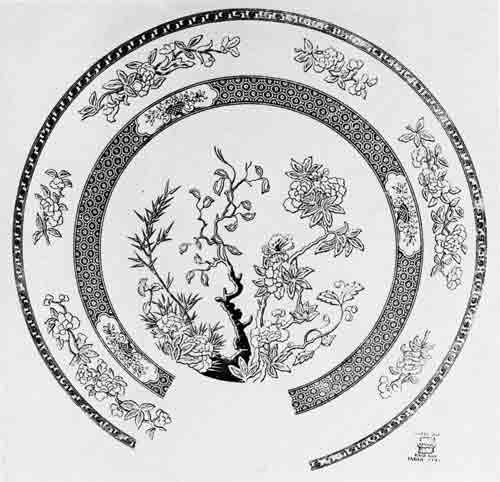
138 India Tree (1878—present). Earliest pattern
number is 2/959. Excavated examples were made by W.T. Copeland. It is
still being manufactured, under the name "Indian Tree," by Spode
Limited.
|
139—142 Ionian (1851—20th century). Registered 11 June 1851.
Twentieth-century marks occur on the copper plates.
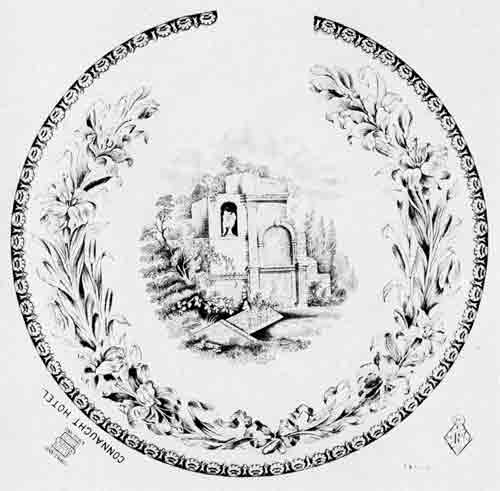
139 Ionian.
|
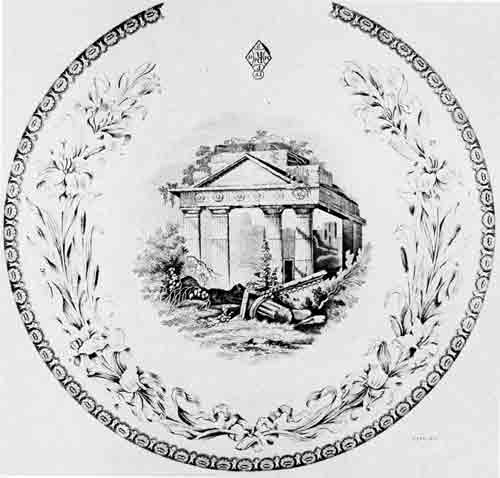
140 Ionian.
|
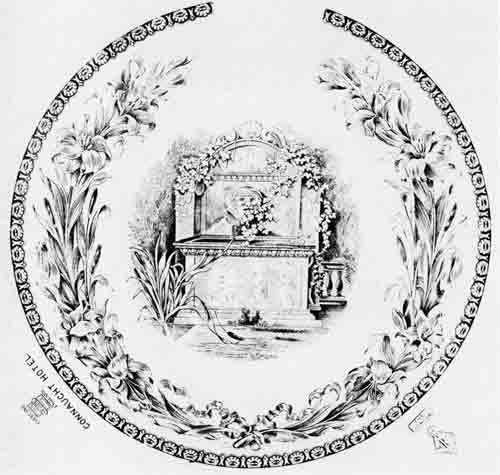
141 Ionian.
|
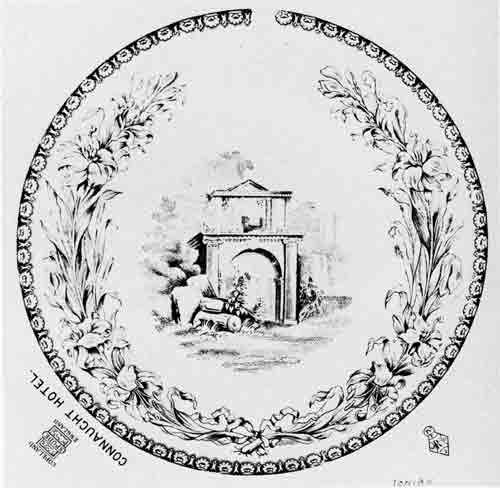
142 Ionian.
|
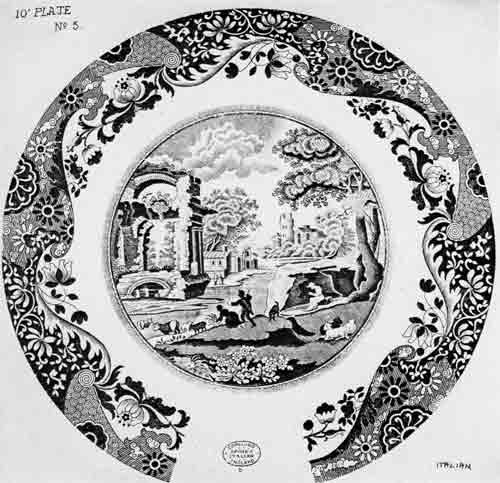
143 Italian (ca. 1816—present). Earliest pattern number is 2614.
Excavated examples were made by Copeland and Garrett, and W.T. Copeland.
It is still being manufactured by Spode Limited.
|
144—145 Ivy (1845—post-1865). Registered 1845. Excavated
examples were made by W.T. Copeland. In 1861 it was given D number 2314
and in 1865 the oak bead was given D number 4217.
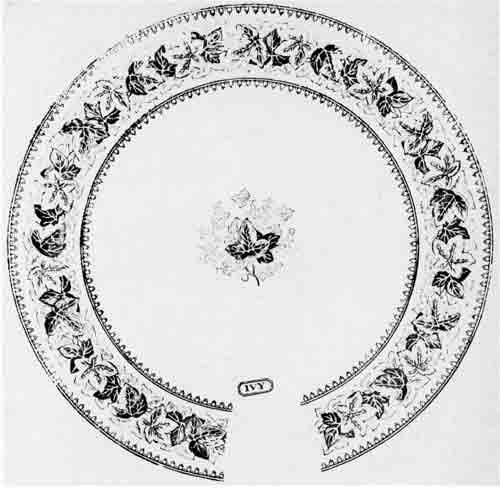
144 Ivy.
|

145 Ivy. The acorn design was used as a secondary border on cups, bowls
and other hollowware.
|

146 Jasmine (ca. 1825—7). Earliest pattern number is B118.
(Illustration from factory pattern book.)
|
147—150 Lily (ca. 1837—20th century). Earliest pattern number
is B756. Excavated examples were made by Copeland and Garrett, and W.T.
Copeland. The border was used in a pattern registered in 1894 under the
name "Chatsworth."
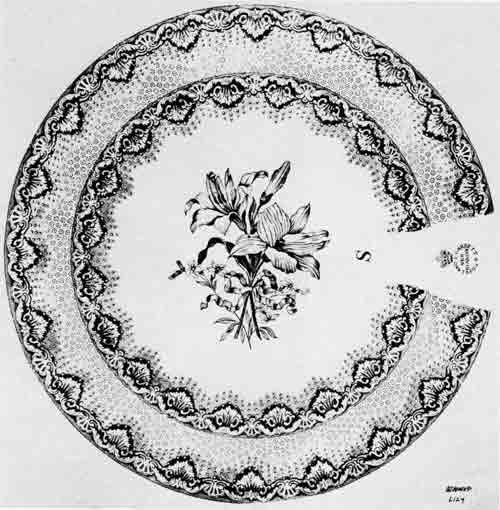
147 Lily.
|
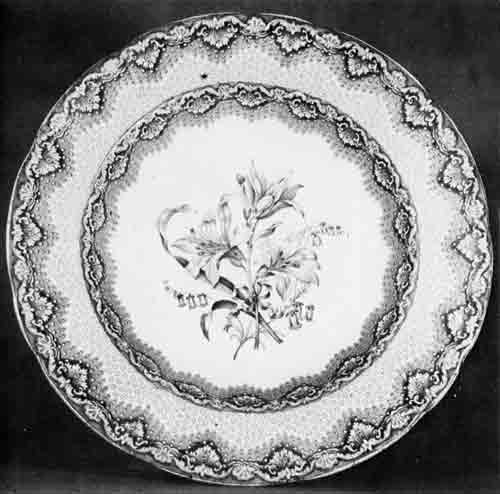
148 Lily.
|
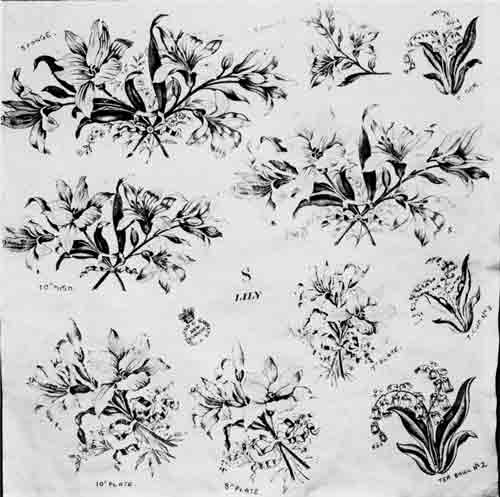
149 Lily centres.
|
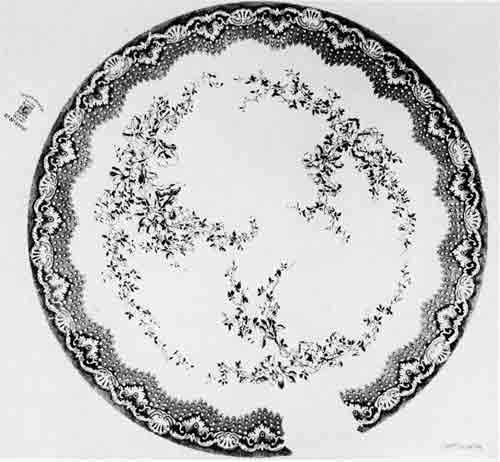
150 Lily border, Chatsworth centre.
|
|

